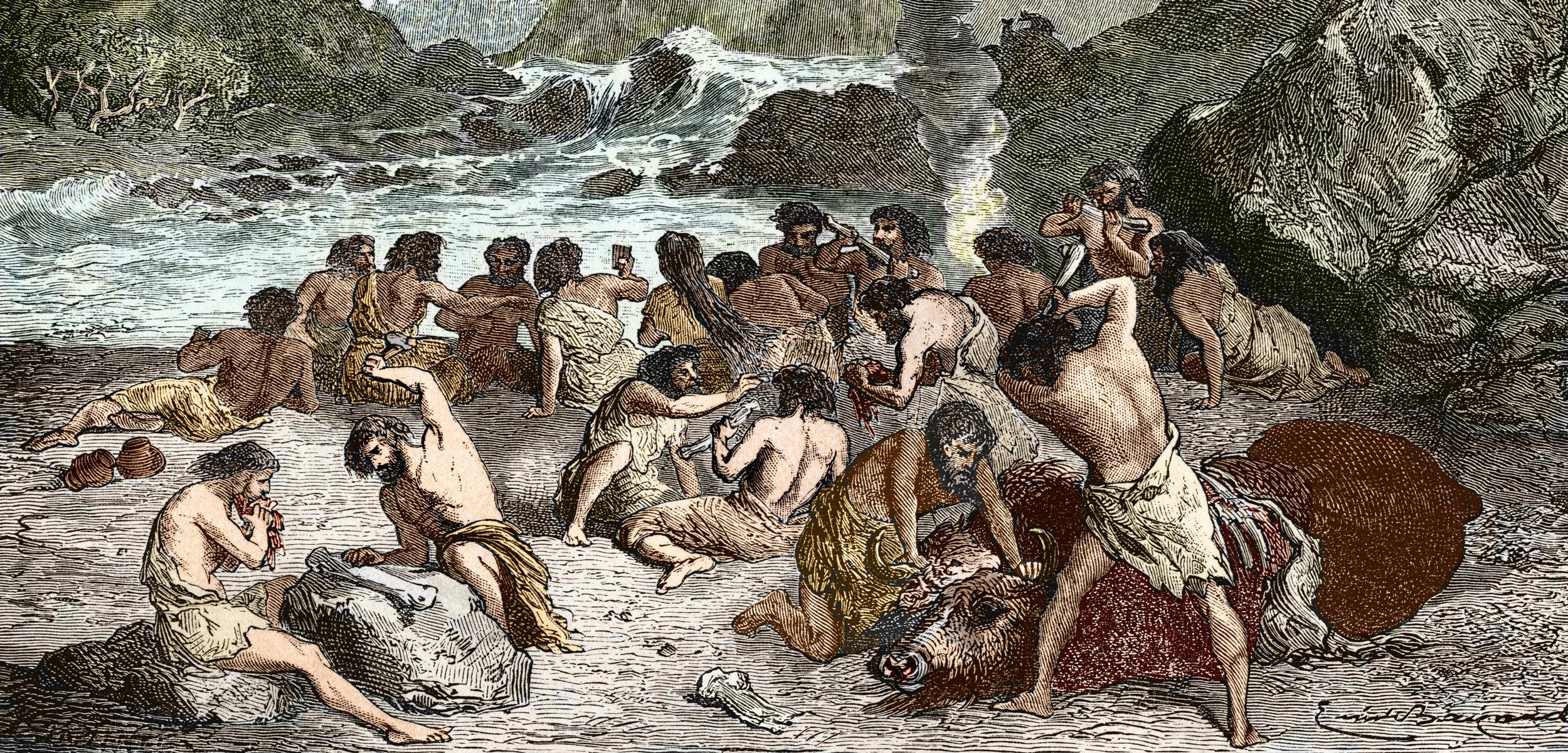Whale Bone Weapons Hint at World’s Earliest Coastal Economy
Thousands of years before the Neolithic Agricultural Revolution, a widespread trade network carried large whale bone spears from Spain to France.
Article body copy
Stone Age humans in Europe made, swapped, and carried whale bone weapons along long-distance networks from Spain through to France, say researchers who have tracked down dozens of such tools. The exchanges around the Bay of Biscay may have contributed to one of the world’s first coastal economies, they argue.
“This innovation was good enough to rapidly spread across this territory,” says Alexandre Lefebvre, an archaeologist at the University of Toulouse-Jean Jaurès and lead author of a new study documenting the find.
Around 15,000 years ago, Western Europe was home to the Magdalenians, a nomadic hunter-gatherer culture that made hunting tools, cave art, and maybe even music. Previous research had shown whale bone weapons were used just north of the Pyrenees mountains, in France. Yet, surprisingly, almost no evidence had been found for the same technology in prehistoric sites along the northern coast of Spain, where whale bones might reasonably have come from.
Lefebvre and his team decided to try to fill that gap by re-examining existing collections of bones taken from 64 sites across the Spanish coast. Many of these bones—found mostly in limestone caves or rock shelters—had been classified simply as bone or antler; Lefebvre suspected some were actually whale bone, scavenged from stranded whales.
Cetacean bones are extremely porous; they are lighter than the bones of terrestrial animals of the same size and have no cavity for bone marrow. Using these criteria, the researchers identified 54 whale bone objects among a trove of more than 8,000 bone artifacts from 12 of the 64 sites along modern-day coastal Cantabria. The majority of them dated to 18,000 to 15,000 years ago, when the researchers think the network was most active.
Most of the newly identified whale bones were crafted projectile points about one centimeter across and up to 21 centimeters long. Some had beveled edges and grooves, likely used to attach small flint blades; some were decorated with geometric designs. All of the weapons had impact fractures, and a subset had traces of resharpening and repair, suggesting the weapons were valued and maintained over time.
Adding these findings to their own previously reported data, the researchers mapped out a trade network spanning over 600 kilometers from Cantabria in Spain, along the coast and across the Pyrenees to the Ariège Valley in southern France. Since the scientists didn’t find any waste from tool manufacturing, they assume that the original sites where the tools were made were on the coast and are now underwater. Only the finished whale bone weapons, not the raw material, seem to have been transported inland, says coauthor Jean-Marc Pétillon.
The study highlights 23 key sites that stand out for hosting a large number of whale bone objects, suggesting they may have been trading hubs. Isturits, France, roughly 60 kilometers from the shoreline, had the highest concentration of whale bones (63 objects have been found), and sat strategically at the center of the network. This site most likely had a “pivotal role” in the distribution of objects far from the coast, says Pétillon. All this, the authors argue, is evidence that the Bay of Biscay was home to the first structured coastal economy in the world.
“This reveals an elaborate network for the circulation and exchange of weapons,” says Paul Pettitt, a Paleolithic archaeologist at Durham University in England who was not involved in the study. This sophisticated trading behavior is just as complex as the economies that evolved around agriculture during the Neolithic Revolution a few thousand years later, Pettitt adds.
João Zilhão, a paleoanthropologist at the University of Barcelona in Spain, who was also not involved with the new work, agrees that the whale bone network shows that the Magdalenian people were engaged in sophisticated interactions. But, he argues that the first coastal economies may have started even earlier. Fishhooks and bones found in East Timor suggest people may have been deep-sea fishing 42,000 years ago, he says, which would have required planning and technical know-how indicative of an organized economy.
Other widely exchanged goods might simply not have lasted long enough for archaeologists to find them, points out Zilhão. “Similar coastal economies involving the circulation of perishables would not be visible in the same way, but that does not mean they did not exist.”

